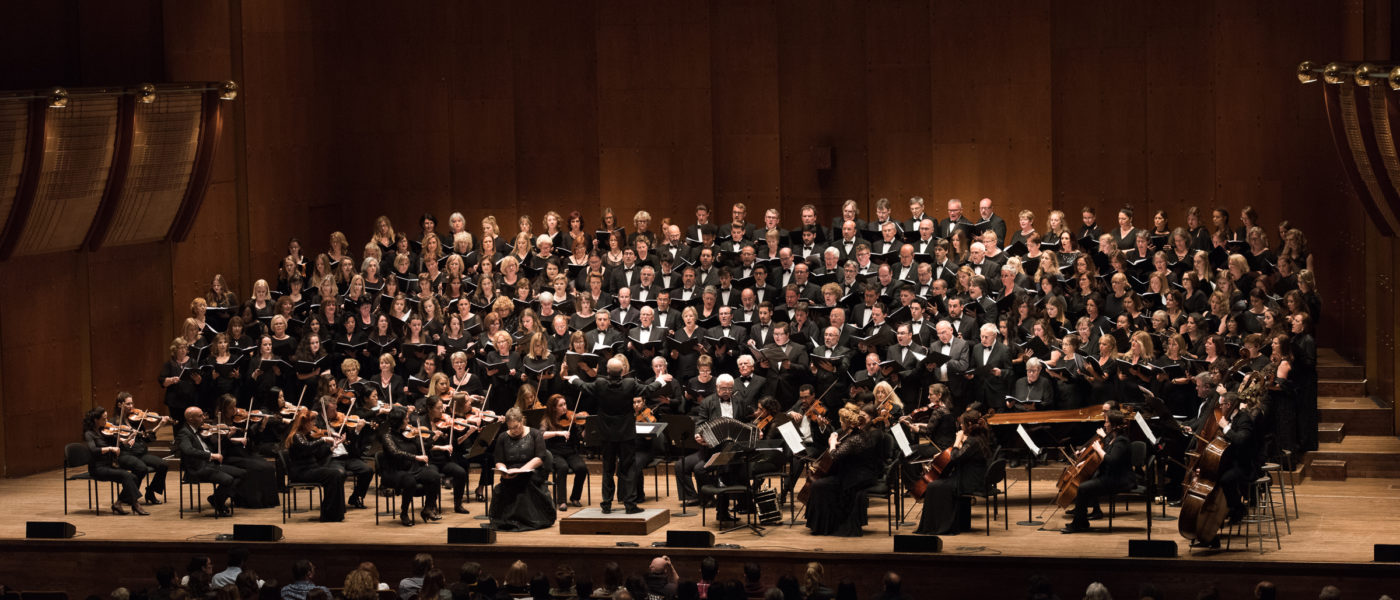Distinguished Concerts International New York (DCINY) presents Viva La Musica de Argentina in Review
Distinguished Concerts International New York (DCINY) presents Viva La Musica de Argentina
Cuerda y Voz, Guest Artists: Dany Dorf, Drums & Voice; François Knab, Andean Flutes, Tiple Colombiano & Voice; Rodrigo Mosquera, Charango & Voice; Sergio Saraniche, Guitar & Voice; Vidal Rojas, Guitar & Voice
Distinguished Concerts Singers International
Jonathan Griffith, Artistic Director and Principal Conductor
Cuerda y Voz, Guest Artists; George Hemcher, Piano
Distinguished Concerts Orchestra and Distinguished Concerts Singers International
Saul Zaks, Guest Conductor
Martín Palmeri, DCINY Composer-in-Residence
Carla Filipcic Holm, Soprano; Daniel Binelli, Bandoneon; Martín Palmeri, Piano
David Geffen Hall at Lincoln Center, New York, NY
April 30, 2017
Distinguished Concerts International New York (DCINY) really did something to redress the grievous lack of Latin American music on our concert stages by bringing Argentine performers and composers to Lincoln Center on April 30, 2017. Many of us thrill to the Argentine tango as performed on Dancing with the Stars, and perhaps a few recognize the name Piazzolla. An intrepid singer might have explored the songs of Guastavino, and pianists may have struggled valiantly with Ginastera’s First Piano Sonata, but there is so much more going on in Argentina. The folk element is never very far from the surface, in fact sometimes it is the surface. Remember: the minuet and waltz were social dances before they were stylized into “classical” genres. Since the current Pope is Argentine, I think he would greatly have appreciated this evening, especially the sacred music. I enjoyed the concert so much (which was streamed live on DCINY’s Facebook page) that I ran home and watched it again.
The evening began with the vocal/instrumental quintet Cuerda y Voz (String and Voice) where all the members double on various instruments. They started with Atahualpa Yupanqui’s plaintive Camino del Indio (The Indian Road), which contained a tantalizing bit of the 1913 Peruvian melody on Andean flute that was appropriated by Paul Simon for his 1970 El Condor Pasa. Yupanqui is the most important Argentine folk musician of the twentieth century, his name means “He who comes from faraway lands to say something,” much like Cuerda y Voz. Then followed four numbers, all featuring the group’s great unanimity, expressive vocals, wonderful handling of the instruments, and even sly humor amid songs, many of which deal with the hardness of life. The tiple colombiano is a “small” guitar with three courses of four strings, very difficult to play, and I confess I had never heard one before. The charango is an even smaller stringed “guitar” with ten strings in five courses.
Cuerda y Voz stayed on stage, playing a discreet instrumental while the first massed choir took the stage for the Misa Criolla by Ariel Ramírez, in which they would take the role(s) traditionally allotted to soloists. This is a complete setting, in Spanish, of the Catholic Mass. Ramírez, who died in 2010, created this signature work in 1964, and it gave him financial independence, but many don’t realize that there are three hundred other works by him. The choir was accompanied by electric piano, a small percussion section, and Cuerda y Voz, the whole conducted by the excellent Jonathan Griffith, who wore a traditional poncho that matched those of Cuerda y Voz. Each movement has as its musical underpinning an Argentine folk-music genre. The Agnus Dei, particularly, was beautifully plaintive in its plea for peace; its music was in the estilo pampeano (from the pampas), a desolate area whose inhabitants are often lonely.
After intermission, a different set of singers took the stage, along with the DCINY orchestra, strings only, a concert grand piano (with the composer playing), a soprano, and a bandoneón soloist, all conducted by the superb Saul Zaks. For those who don’t recall, the bandoneón is the “accordion-like” Argentine instrument that imparts such bite, soul, and authenticity to that music. They were there to give us the world premiere of Tango Credo by Martín Palmeri, part of a projected complete Mass setting (he has previously created a Tango Gloria) in Latin utilizing tango rhythms and shapes. Daniel Binelli began the entire work with mysterious utterances from the bandoneón that sounded like he was assembling cosmic fragments that would later be revealed to be whole. He was excellent, and his virtual miming of death at the phrase “Passus et sepultus est” (He suffered and was buried) was gripping.
The soprano soloist, Carla Filipcic Holm, has a very big voice, and it was a pleasure to hear that it was totally in her control, capable of soft high notes and other subtleties. She invested the part with great feeling. The tango, for me, is such a physical dance, full of sudden alternations of seduction and rejection, that when it is stripped of dance movement I don’t know quite what to make of it. It seems a bit too sensual for sacred music, my limitation I’m sure; perhaps I just need a long stay in Argentina! Palmeri’s Credo took 38 minutes, whereas the entire Mass by Ramirez was 22 minutes. The Credo is the wordiest section of the Mass, and there was a lot of repetition of what had just been sung by the chorus or the soloist. Nevertheless, the movement built very well, the Crucifixus was the appropriately solemn low point, and thereafter the piece progressed to a triumphant affirmation of faith, which after all is the point of the Credo.
Interestingly, the Argentine composer Palmeri had a Danish grandfather, and the conductor, who is native Argentine, currently makes his home in Denmark. The choirs were extremely international, with groups from Argentina, Germany, Italy, Spain, and Denmark, as well as a few “domestic” groups. The triumph of globalization, when applied to something worthwhile!

